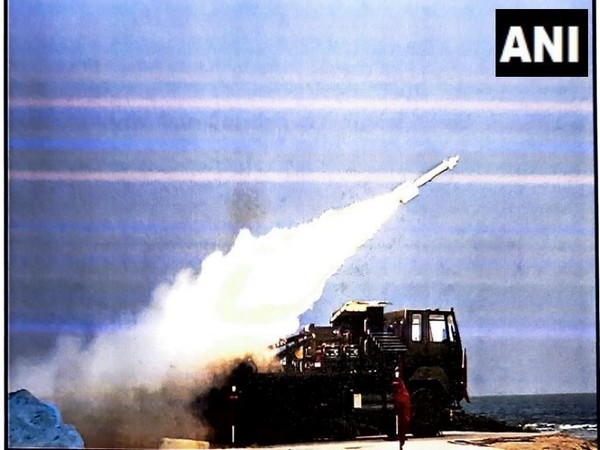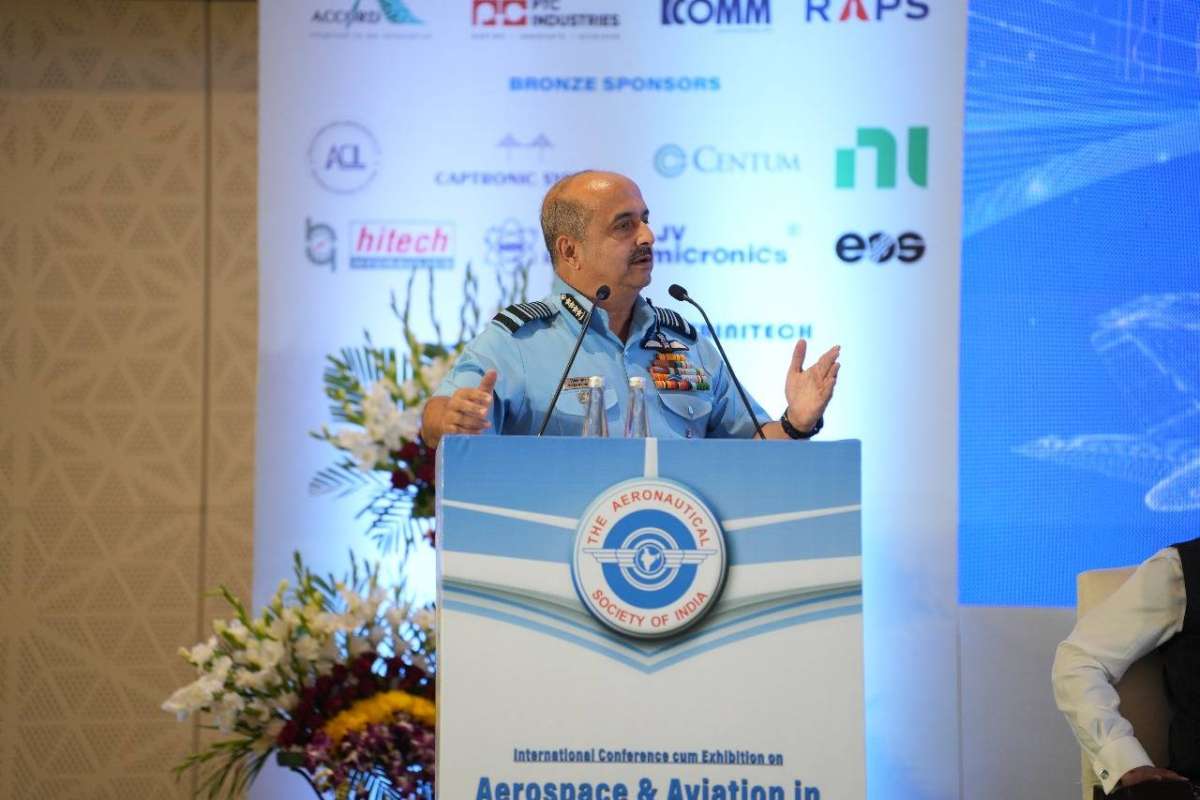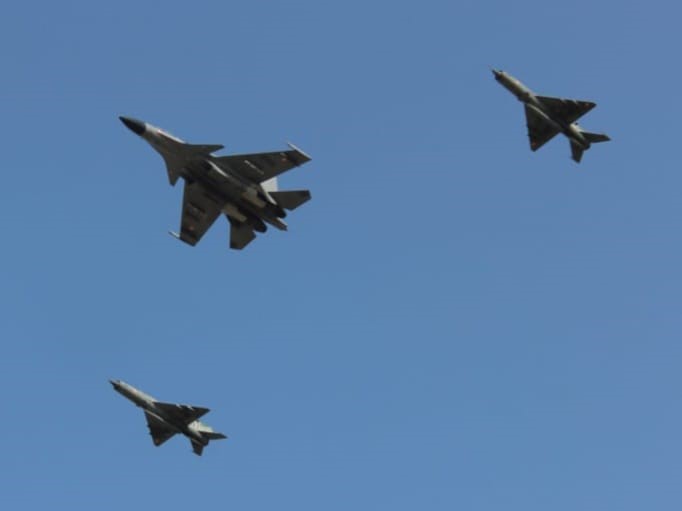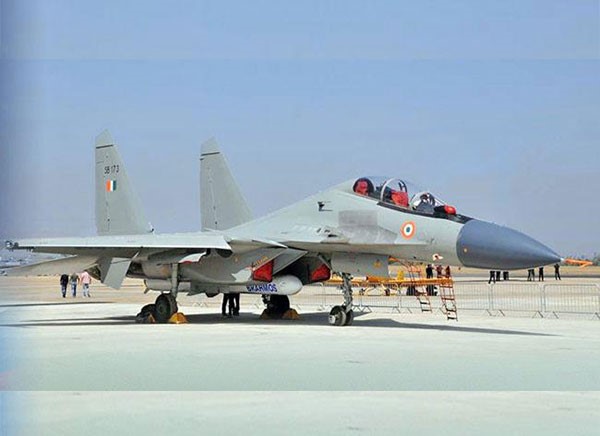The Chief of Defence Staff, General Anil Chauhan, graced the occasion as the chief guest….reports Asian Lite News
The Indian Air Force (IAD) on Saturday displayed its combat firepower in ‘Exercise Vayushakti 2024’ at Pokhran Range near Jaisalmer. A range of the country’s enviable air assets, including Rafale fighters, LCH Prachand Chinook and Apache demonstrated their capabilities for the first time during the exercise.
The Chief of Defence Staff, General Anil Chauhan, graced the occasion as the chief guest.
The exercise, a day and night event, started with three Chetak helicopters trooping the National Flag and the Air Force ensign, flying past the grandstand with the National Anthem playing in the background.
It was followed by the first appearance of Rafale fighters in an exercise of this kind. The mean machines performed a Sonic Boom and later successfully engaged an aerial target with a beyond-visual-range air-to-air missile.
The Apache attack helicopter also demonstrated its firepower at this event for the first time by engaging targets with air-to-ground guided missiles while Mi-17 helicopters engaged ground targets with rockets.
In another first, IAF Chinook helicopters demonstrated rapid deployment of combat assets by airlifting the Indian Army’s M-777 Ultra-Light Howitzers in an underslung mode, enabling prompt destruction of simulated enemy targets on the ground.
The indigenous Air Defence Systems, Akash and SAMAR missile systems were also showcased, destroying multiple aerial targets.
Two Jaguar aircraft flying at low levels followed the Rafales, taking high-fidelity reconnaissance images of the area.
This year’s theme of the Vayushakti was, ‘Lightning Strike from the Sky’, as 120 aircraft displayed the lAF’s offensive capabilities by day as well as by night.
Fighters of the Indian Air Force that participated in the exercise included the Rafale, Su-30 MKI, MiG-29, Mirage-2000, Tejas and Hawk. The fighters from the IAF fleet attacked and destroyed simulated enemy targets on the ground and in the air with deadly precision.
The indigenously built Tejas aircraft also showcased its swing-role capability and destroyed an aerial target with a missile, followed by the engagement of a ground target with bombs.
lAF also displayed a long-range unmanned drone, which destroyed a simulated enemy radar site with pinpoint accuracy.
Combat support operations by transport aircraft included a containerised Delivery System drop by a C-17 heavy-lift aircraft and an assault landing by a C-130J carrying IAF Special Forces, Garuds
The joint operations included the IAF and Indian Army’s weaponized version of the Advanced Light Helicopters Mk-IV, which devastatingly simulated enemy targets using their rockets and swivel guns.
Later, in the evening, the Garud commandos air-dropped by Mi-17 helicopters carried out mock anti-terror or insurgency operations aimed at clearing hideouts.
Night events displayed for the first time the capabilities of the indigenous light combat helicopter ‘Prachand’, wherein it neutralised a designated target with rockets.
It was followed by a Jaguar and Su-30 MKI dropping heavy calibre and area weapons at night, showcasing the strategic bombing capability of the lAF.
The event also included a free-fall drop by the Akashganga team and flare dispensing by C-130J at night. In the spirit of jointness, a tri-service band enthralled the audience with their tunes.
During the display, approximately 50 tonnes of ordnance was dropped in a short span of two hours over an area of two square kilometres.
The event showcased the IAFs offensive lethality and precision targeting capability. (ANI)
ALSO READ: Labour Unrest Soars Amid China’s Slowdown












